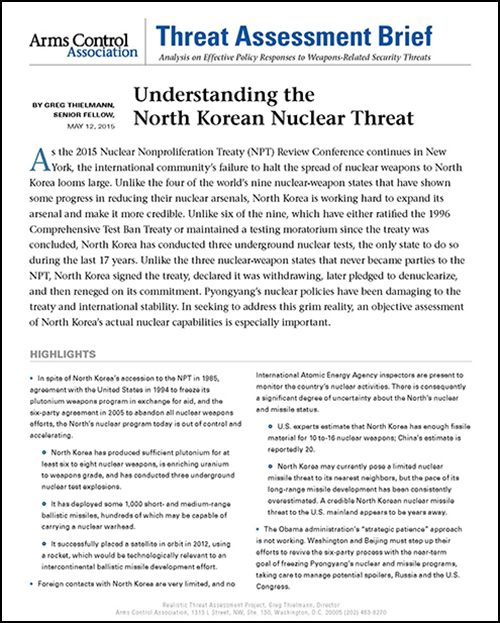By Greg Thielmann
May 2015
 |
| Download PDF |
As the 2015 Nuclear Nonproliferation Treaty (NPT) Review Conference continues in New York, the international community's failure to halt the spread of nuclear weapons to North Korea looms large. Unlike the four of the world's nine nuclear-weapon states that have shown some progress in reducing their nuclear arsenals, North Korea is working hard to expand its arsenal and make it more credible. Unlike six of the nine, which have either ratified the 1996 Comprehensive Test Ban Treaty or maintained a testing moratorium since the treaty was concluded, North Korea has conducted three underground nuclear tests, the only state to do so during the last 17 years.
Unlike the three nuclear-weapon states that never became parties to the NPT, North Korea signed the treaty, declared it was withdrawing, later pledged to denuclearize, and then reneged on its commitment.
The North's nuclear program today is out of control and accelerating, damaging both the NPT and international stability. Addressing this grim reality begins with an objective assessment of North Korea's actual nuclear capabilities and an acknowledgment that the Obama administration's "strategic patience" approach is not working.
Washington and Beijing must step up their efforts to revive the six-party process with the near-term goal of freezing Pyongyang's nuclear and missile programs, taking care to manage potential spoilers, Russia and the U.S. Congress.
